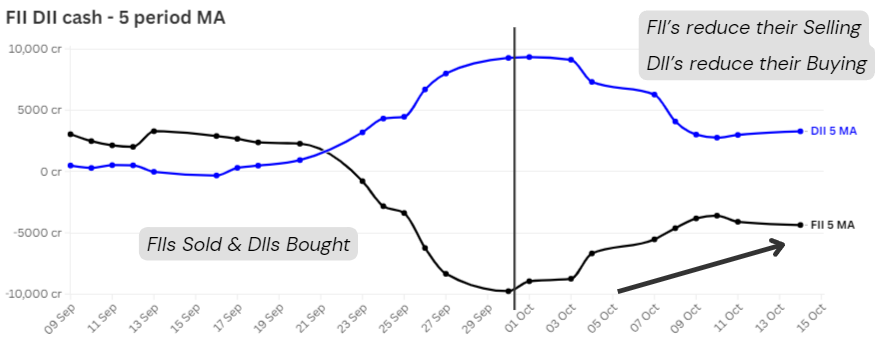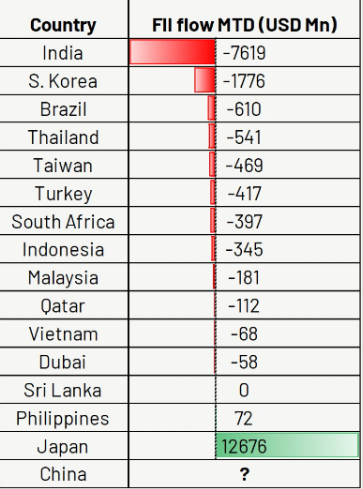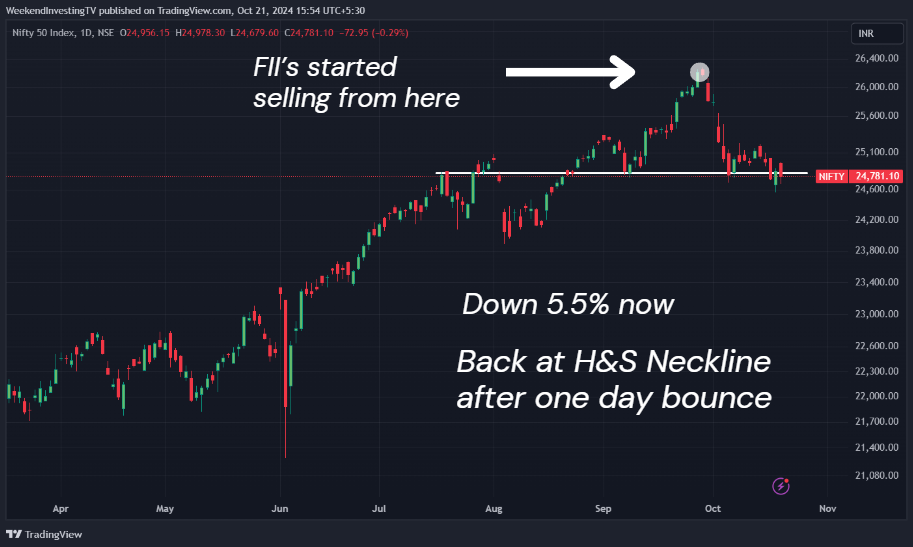
The market again started with a sharp move down but stayed reasonably flat after that initial scare. Things have changed to the extent that earlier gap downs were happening, and suddenly the markets would go up. Now, it seems we are experiencing either a bounce or a gap up followed by a downturn. There is certainly a shift in sentiment occurring. I am speculating here; I have no way to confirm this shift, but it appears that the market is struggling to sustain higher levels at least for now. At the same time, it is not dropping below important support, so we find ourselves stuck in a range. Some bad news could really topple the market.
We’ve had certain results that were not expected, yet the market has managed to sustain itself. From a results perspective, it’s a mixed bag—some are better than expected, while most are either in line or below expectations. The market is holding at these levels despite foreign institutional investors (FIIs) continuing to sell. That’s what we will discuss today: how long can we really absorb this selling pressure?
Where is the market headed?
Market Overview
The market pattern we’ve been anticipating over the last few sessions is still at the neckline, not breaking down yet. However, bad news could lead to a breakdown. We are hovering in a range of about 200 to 300 points, with 25,100 on the top and 24,7800 on the bottom. This range needs to break out above the top to initiate a new upward trend. Until then, we will continue to consolidate, with 23,800 remaining the first major support point on the chart.
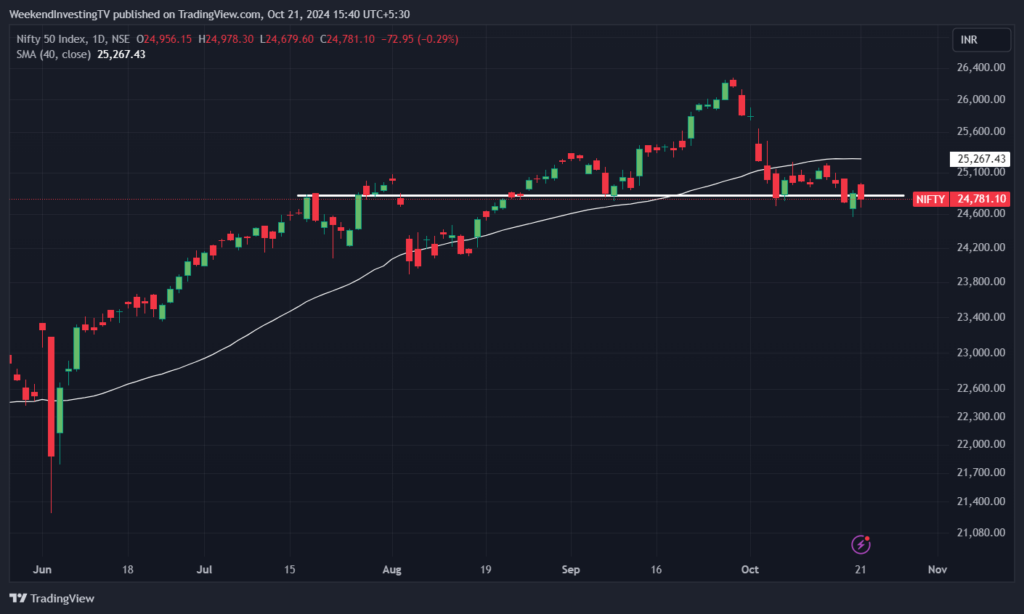
Nifty Next 50
Nifty Next 50 looks quite weak; yesterday’s bounce was just that—a bounce. Today marked a continuation of the downward trend from two days ago. We lost about 1.35% on this index, which has been one of the best-performing indices so far.
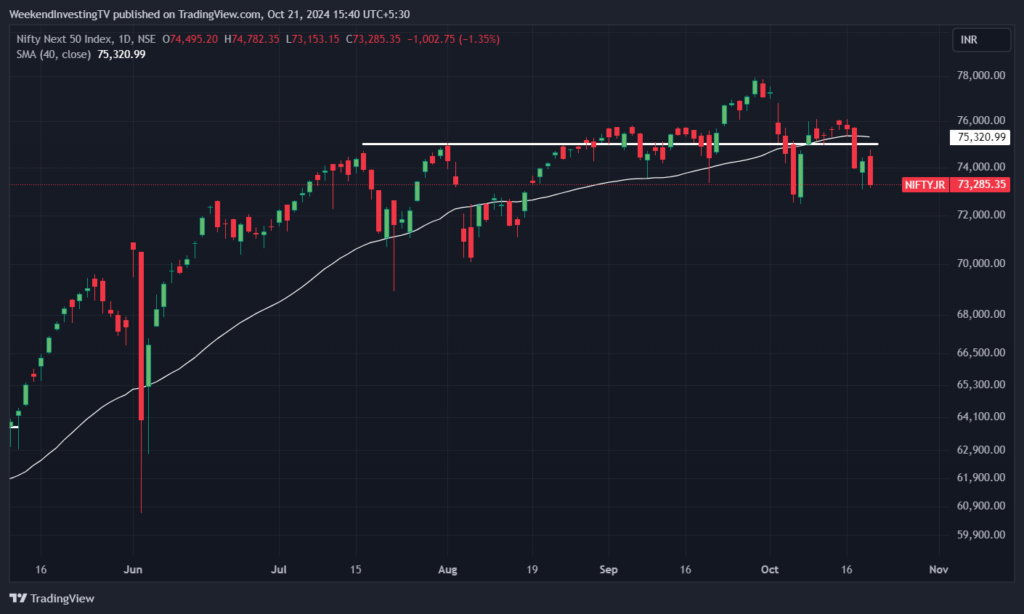
Nifty Mid and Small Cap
Mid-caps also displayed a bearish engulfing pattern from the previous session. This is now a continuation of the downward trend for the third session in a row, with a decline of about 1.5%. It appears that three to four months of gains have been wiped out.
The Nifty Small Cap 250 index also showed a similar pattern, retracing back to the average after gapping up but then collapsing, erasing all of yesterday’s recovery. There are no real signs of any upward momentum at the moment. Perhaps the result season will pass in this choppy manner, and we might see some fireworks post-Diwali, but nobody can really predict what will happen.
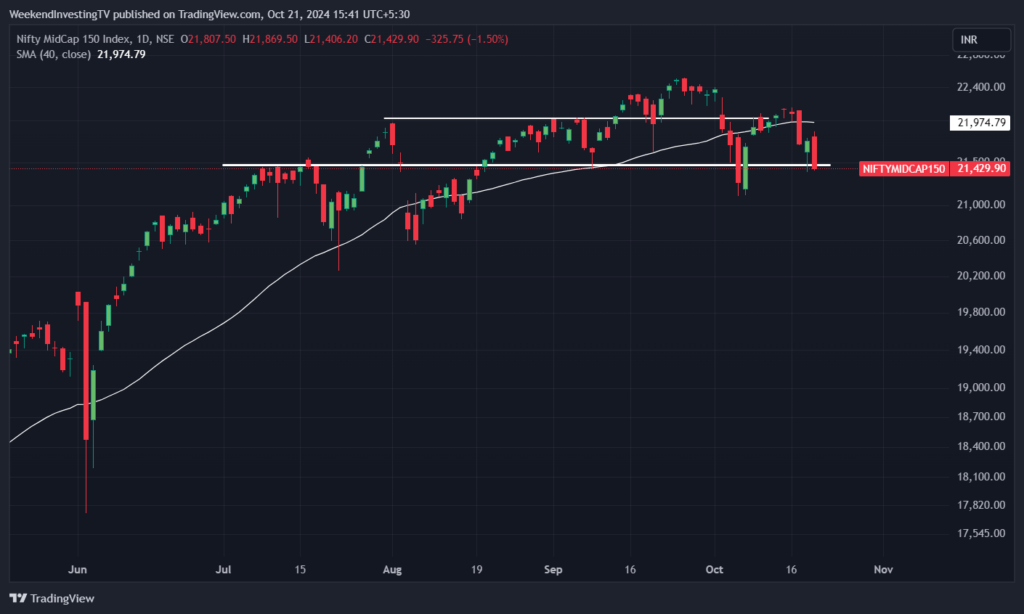
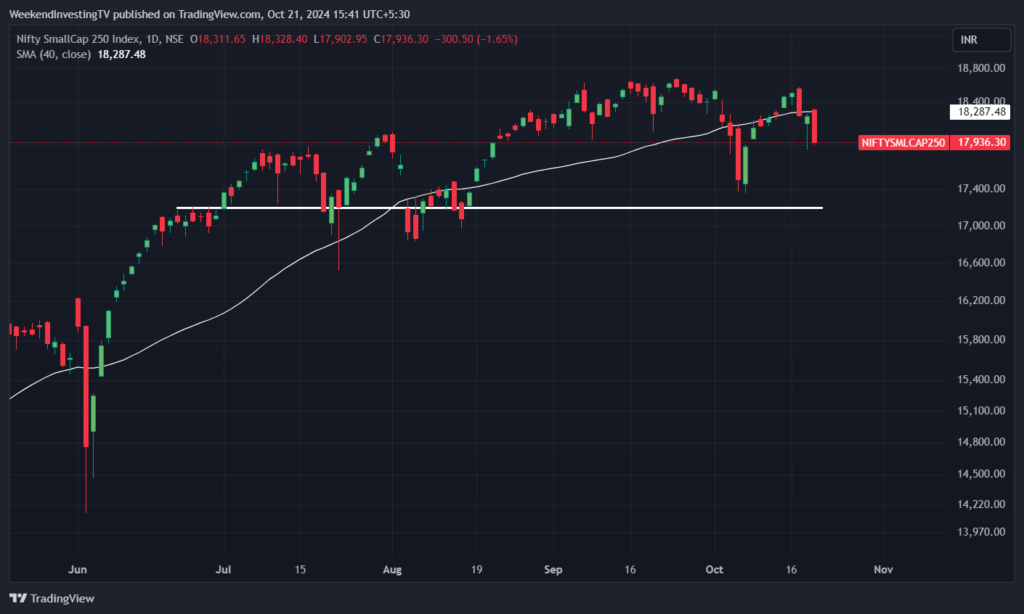
Nifty Bank Overview
Fortunately, Bank Nifty did not lose what it gained yesterday, closing down just 0.25% for the day and remaining relatively safe.
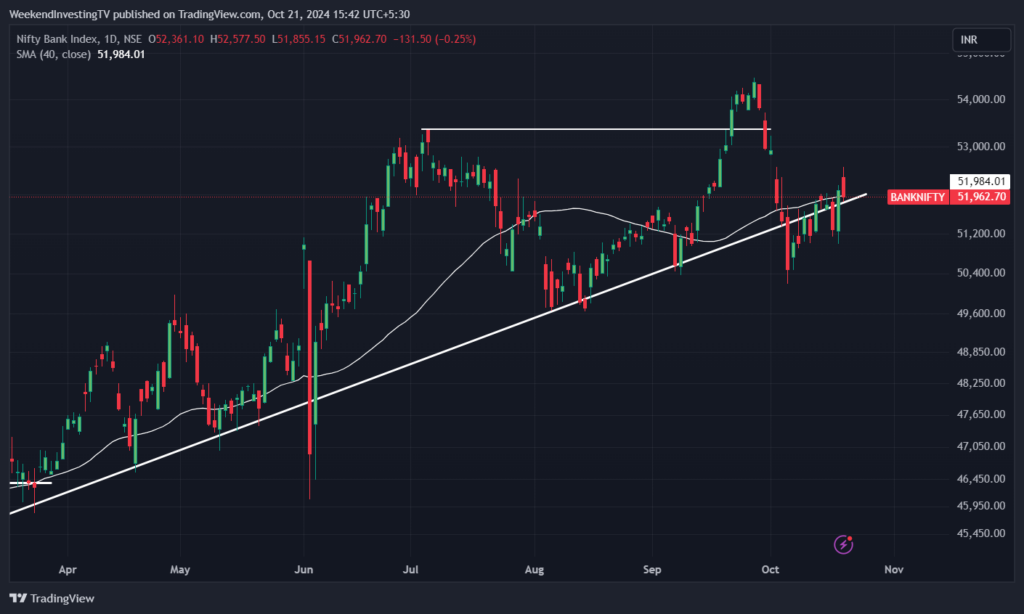
Advanced Declined Ratio Trends
Momentum trends indicate 417 losers today among the top 500 stocks, with only 81 advances. This showcases a significant skew towards profit booking and selling. FIIs continued to sell, offloading 5,400 crores on the 18th of October. Meanwhile, domestic institutional investors (DIIs) attempted to match this selling with their own buying of 5,200 crores. This means the selling pressure from FIIs has been somewhat softened.

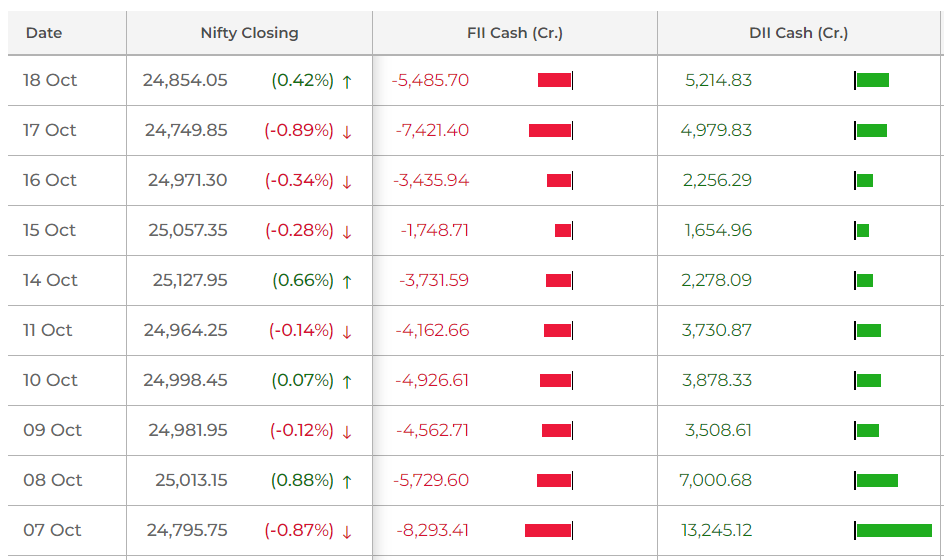
Nifty Heatmap
HDFC Bank posted a 5% year-on-year growth, which the market responded positively to, with a gain of 2.79%. HDFC Bank essentially saved the day today; without it, we certainly would have seen a significant breakdown. Bajaj Auto also helped the market a bit after facing a sharp decline two days ago, with management giving positive targets that seemed to reassure shareholders. However, that bounce may not last due to the severe cut two days prior.
Asian Paints gained 1.9%, and Reliance was up 0.7%. On the other hand, Kotak Bank was hit hard, despite posting reasonable growth of around 5-6%. Instead of gaining like HDFC Bank, it fell by 4.3%, indicating differing expectations from banks within the same industry. Energy stocks, including ONGC, BPCL, and Coal India, all lost ground, while cement stocks also declined.
Nifty Next 50 is awash with red, with Zomato standing out as the only gainer, though it was thrashed yesterday. Siemens, ABB, and other capital goods stocks were among the big losers today, along with REC, PFC, IRFC, and DLF. Many stocks that had previously been fantastic gainers recently faced profit booking, suggesting that the market is not in the mood for a buying spree right now.
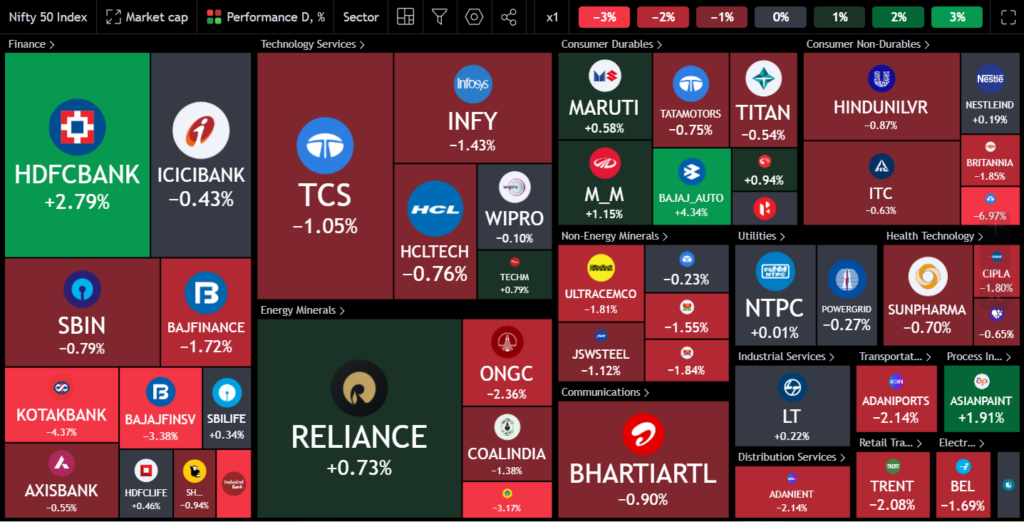
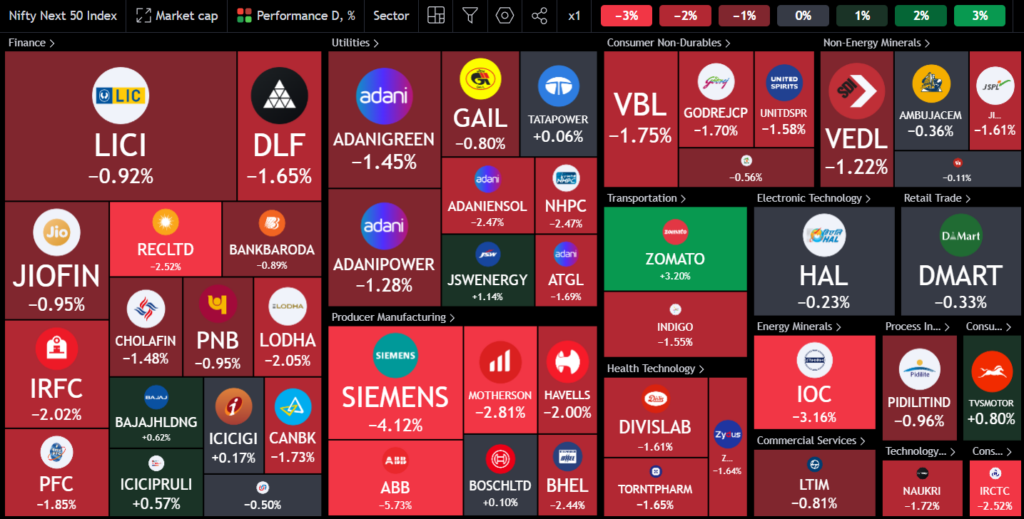
Sectoral Overview
Sectoral trends reveal all red, with metals leading the decline at -1.5%. It’s noticeable that there’s been a shift in sentiment regarding China; just a week ago, there was a lot of talk about capital moving there, but that conversation seems to have vanished. Metals are down 1.5%, with public sector enterprises also down by 1.5%. Real estate and FMCG stocks are suffering as well, with FMCG down 8.5% in just one month, which is concerning since they were supposed to act as a defensive play.
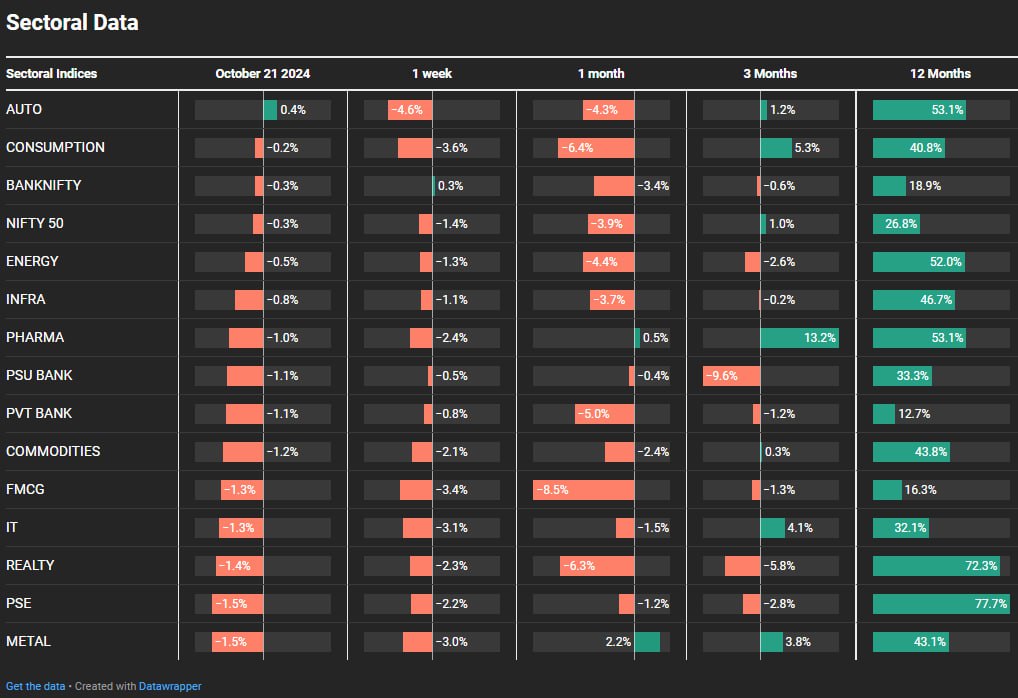
Sectors of the Day
Nifty Auto Index
Autos are showing a minor uptick of 0.4% in reaction to yesterday’s fall, but they are leading the decline on a weekly basis at -4.6%. The falling autos and FMCG stocks indicate that the market was expecting more results from rural and general consumption, but the economy does not seem to be meeting those expectations. Despite all this, the market is only a few percentage points from its all-time high, which suggests we are still performing well in some respects.
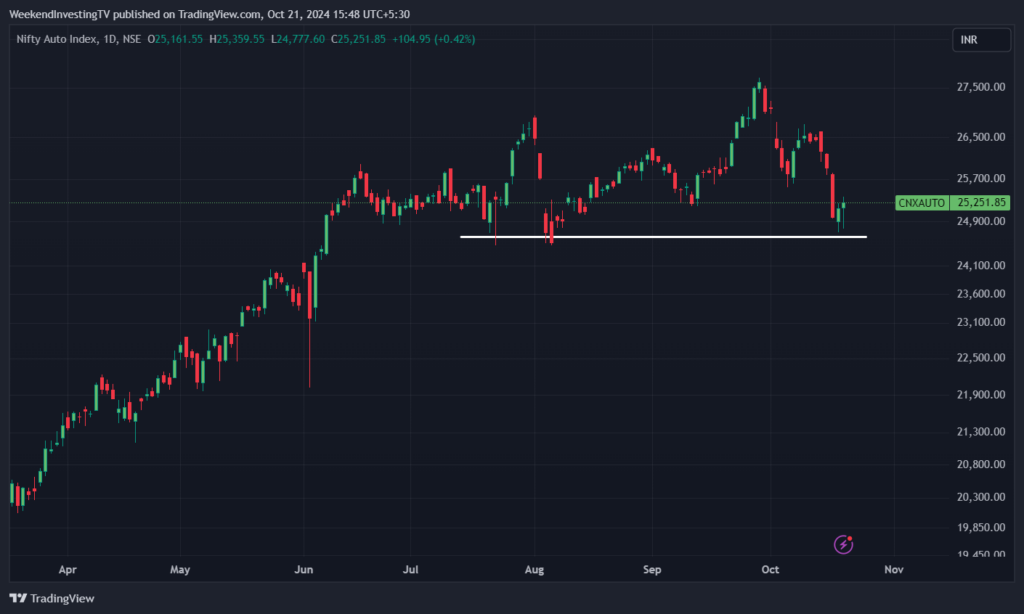
Stock of the Day
Amber Enterprises
while Amber Enterprises surged by 17.41%, showcasing some high-growth stocks still thriving despite a weak market.
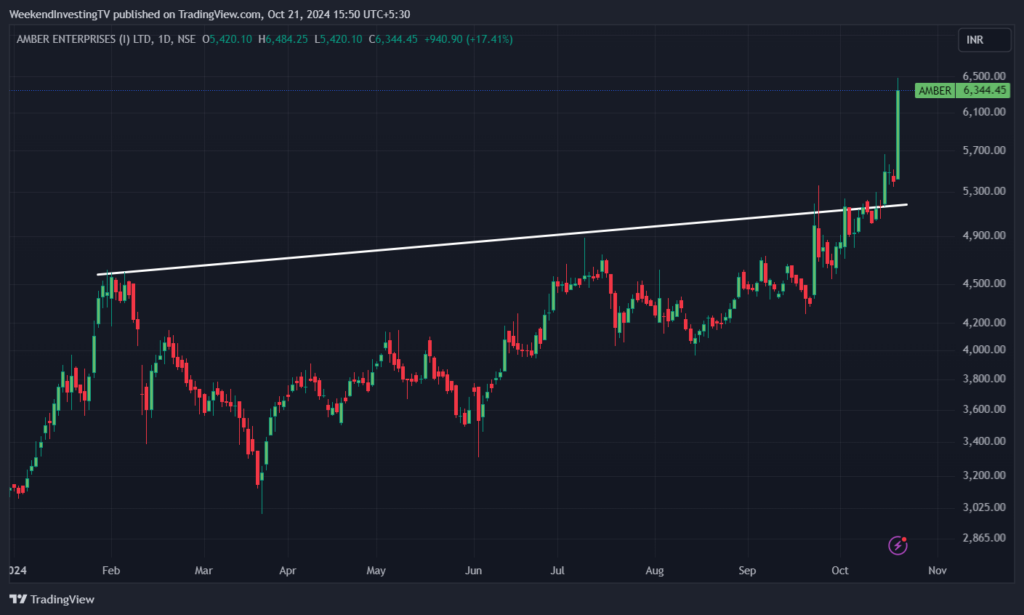
Story of the Day
However, we must ask: how long can the market keep absorbing the FIIs’ selling pressure? Since the 27th of September, they have sold 91,000 crores of stock in less than a month.
Typically, for each day of selling by FIIs, there has been corresponding buying from DIIs, resulting in a near mirror image of buying and selling activity. This trend has softened the blow of FII sales, bringing the market down only about 1,500 points or 5.5% from its previous peak.
As we look at potential market movements, it’s essential to acknowledge that natural corrections or consolidations will occur. Right now, the market is forming a head-and-shoulders pattern that could signal a fall of about 1,200 to 1,300 points if we go in that direction. My personal feeling is that we might see a downturn in the shorter term. The upcoming quarter—October, November, December—may be a period of consolidation, but next year could bring newer fund flows toward India.
In terms of fund flow, I couldn’t obtain recent numbers from China, but it appears that funds are flowing out of India, South Korea, Brazil, and Thailand, with Japan being the only market gaining. This suggests a reversion to the mean might occur soon. India is viewed as one of the most expensive markets globally, so some money is likely to move away. However, if the current government can perform its election magic, the trend could reverse rapidly.
As of now, there is only a trickle of fund flow occurring. Historically, FIIs have sold significant amounts; in September and October 2008, they sold 28,000 crores, and in February and March 2020, they sold 78,000 crores. Presently, in October alone, they have sold approximately 75,000 crores, nearing one lakh crores when including the last ten days of September.
Despite the selling pressure, the market has not yet experienced a severe breakdown. A positive note is that SIP money continues to flow in, reaching new records monthly. While some believe SIP flows will support the market for years, it’s crucial to recognize that sentiment can change quickly. A few weeks of selling could lead many investors to pull back from their SIPs, and that can shift market dynamics dramatically.
Markets are inherently fickle; relying solely on external money to support them is not advisable. Therefore, it’s essential to plan so that if a long-term consolidation occurs, your strategy remains viable. After enjoying four to five years of strong markets, if we face a period of consolidation—be it six months, one year, or longer—you should be prepared to navigate that phase.
Countering this thesis is the ongoing excessive supply of easy money, which may continue to prop up the market. China has also recently cut interest rates by a quarter percent, while India’s RBI governor warns that cutting rates is risky. This reflects the mismatch in opinions regarding the interest rate cycle.
Looking ahead, the upcoming elections in India and the U.S. in November may clarify the direction of fund flows. We will, of course, continue to follow our strategies. The one mantra remains: buy what is going up, sell what is going down. That’s all you really need to know. The rest is noise, though we should monitor the noise to align our expectations.
